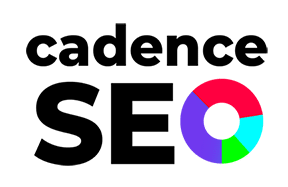Keyword research is pivotal for anyone looking to improve their online visibility and engagement. It’s not just about finding popular terms; it’s about understanding the queries and needs of your audience. As online competition becomes tougher, the ability to optimize your content with the right keywords can set you apart. This beginner’s guide demystifies keyword research, offering essential insights and tools to help you identify your audience’s language and use it to enhance your digital marketing strategy.
Keyword Research, Defined
Keyword research is the process of discovering and analyzing the search terms that people enter into search engines to use that data for search engine optimization (SEO). It provides valuable insights into the queries that your target audience is searching for on the web, their volume, and how difficult it might be to rank for those terms. There are two kinds of keywords: Short-tail and long-tail. Short-tail keywords, or keywords, are made up of one or two words, whereas long-tail keywords consist of three or more words. Long-tail keywords provide a more targeted search intent than regular keywords since they’re more specific. At its essence, keyword research is about understanding language and the nuances of consumer behavior online, enabling digital marketers to tailor their content and strategies effectively. Search engine crawlers use those keywords to help index and categorize your content in search engine results pages (SERPs) properly. With the right keywords, enterprises can increase their content’s visibility and performance.
Why is Keyword Research Important?
Keyword research is an invaluable part of the SEO digital marketing process. When you identify keywords that will most likely resonate with your target audience, you can create content around those keywords, making your marketing strategy efficient and effective. Keyword research benefits several stakeholders:
Search Engine Crawlers
Search engines like Google or Bing use keywords to rank your website in SERPs. When blog posts contain relevant keywords, crawlers are able to rank your content high to appease search engine users.
Search Engine Users
Consumers enter keywords into search engines to find solutions to their wants and needs. Once content that matches those keywords comes up in SERPs, consumers will typically be looking at the top results. It’s all about user experience. Keywords make the search more streamlined and convenient for consumers to find what they’re looking for. Once they do, they’ll click over to that site.
Companies
Businesses that utilize keyword research can see an increase in their return on investment (ROI). It allows enterprises to make data-driven decisions about their SEO strategy. Business leaders will know the best keywords for drawing traffic to their websites instead of having to guess.
Keyword Research Best Practices
Adopting best practices in your keyword research can significantly enhance the effectiveness of your SEO and content marketing strategies. Here are four helpful ways to find the right keywords for your content:
Keyword Ideation
Think about possible keywords that may be relevant to your industry, products, or services. You can start broad. The idea is to develop a list of keywords, which you’ll check later with a keyword research tool. For example, a bike shop in New York City may come up with keywords like “bike shop,” “bike parts,” or “bike repairs.” It depends on what products or services the shop in NYC offers.
Research Target Keywords from Competitors
It’s always a good idea to see how your competitors are fairing. If you aren’t sure who your competition is, add keywords related to your industry into the search engine and see who comes up. Who’s ranking high in SERPs? What keywords seem to be working for them? How similar are your products or services? Researching your competitors may inspire some keyword ideas to give your business an advantage in the marketplace.
Get Specific with Long-tail Keywords
Now that you have a list of keywords, consider expanding that list to include long-tail keywords.
For the bike shop in New York City, there may be a lot of competition for broad keywords like “bike shop” and “bike parts” because they’re too short and generic. Finding longer, more specific keywords can help your business stand out. For instance, “electric bike repairs New York City” may help that business rise to the top in local SEO SERPs.
Use a Keyword Research Tool
Using search engines to get an idea of what keywords are working is helpful; however, it can be time-consuming. On the other hand, a keyword research tool can help you expand keywords by analyzing search trends and data. Here are four popular keyword research tools:
Google Search Console
Google’s Search Console is one of the most widely used search tools in the world. When it comes to keyword research, it’s a great place to start. With the Search Console, you can:
- Search for keywords that you are currently ranking for on Google.
- Discover new keywords that you may not have considered.
- Analyze competitor’s keywords to see what they are ranking for.
- Track the performance of your content based on keywords.
- Discover new backlinks and opportunities for more content creation.
Google Keyword Planner
The Google Keyword Planner is a free tool that many content creators use to help them discover new and trending keyword opportunities. With the Keyword Planner, you can:
- Get keyword ideas based on search volume and competition.
- Determine the best time to post your content.
- Discover new keywords based on search volume and competition.
- Discover new backlinks and opportunities for more content creation.
Ahrefs Keywords Explorer
Ahrefs Keyword Explorer is one of the most popular keyword research tools, and for a good reason, too. It allows you to:
- Get keyword ideas based on search volume and competition.
- Find the best time to post your content by looking at what time your audience is most active and what content they are most likely to search for.
- Find the best keywords based on popularity and competition.
- Discover new opportunities to build connections and create more content.
- Analyze competitor’s keywords to see what they are ranking for.
Semrush
Semrush provides a wide range of keyword research tools. Semrush tools are capable of:
- Analyzing the performance of your website as well as your competitors’ websites.
- Showing you the keywords that your audience is currently searching for.
- Identify keyword and backlink gaps that you may be able to fill.
- Find the best keywords/phrases to draw in organic and PPC results.
How to Choose the Best Keywords
Choosing the best keywords comes down to three main metrics: Relevance, authority, and volume.
Relevance
Again, consumers turn to search engines because they want to solve a problem. Your keywords need to be relevant to a search engine user’s intent. Search engine algorithms use your keywords to make sense of your content and decide its relevance to a consumer’s search query. The closer your keywords match a user’s needs, the better chance your content will have of ranking high in SERPs.
Authority
Search engine users rely on search engines like Google to give them the best results for their queries. That means Google will rank content it considers authoritative higher than others, such as websites with trusted reputations.
Volume
Keyword volume is measured by monthly search volume (MSV). With MSV, you can learn just how many times one of your keywords is searched each month. When choosing keywords, you want to ensure they get good search volume.
Bonus Metric: Keyword Difficulty
This number often falls on a scale between 0 and 100 and will tell you how difficult it is to rank for a specific keyword or keyword phrase. Typically, the larger the number, the more difficult a keyword or keyword phrase is to rank organically. It will depend on the specific tool you choose to use. For example, if you’re using Semrush, the higher the keyword difficulty score, the harder it is to rank for.
How to Implement Keywords
Now that you have quality keywords for your content, it’s time to implement them! If possible, add your target keyword to the title tag, meta description, and page title. The first paragraph of your articles should also include your main keyword. It helps if you can make the main keyword flow naturally in your content, as well as a few supporting keywords. However, avoid keyword stuffing—adding irrelevant or excessive keywords to get search engines to rank your content higher. Doing so can backfire, making your content unreadable to search engine crawlers. Always keep your users in mind and ask yourself if the content and keywords offer value to potential customers.
How Often Should You Perform Research?
The digital landscape is ever-evolving, with search trends, algorithms, and user behaviors constantly changing. This dynamic nature necessitates regular keyword research to keep your content relevant and competitive. But how often should you conduct this research?
Performing keyword research should not be seen as a one-time task but rather as an ongoing activity. Ideally, it would help if you revisit your keyword strategy at least once a quarter. However, certain situations may warrant more frequent updates:
Launching a New Product or Service
New offerings may introduce new keywords into your portfolio.
Seasonal Trends
Certain products or services might have seasonal peaks that require timely attention.
Algorithm Updates
Search engines regularly update their algorithms, affecting how your pages rank.
Changing Market Dynamics
Shifts in consumer behavior or new competitors entering the market can impact your keyword effectiveness. Staying proactive and regularly updating your keyword research ensures your content remains visible and relevant to your target audience.
Consult the Keyword Research Experts at Cadence!
Keyword research is a cornerstone of any SEO strategy. Cadence is a full-service digital marketing agency and consultancy specializing in several SEO tools and techniques, including keyword research. Our team of SEO nerds can leverage keyword research to create high-quality content that will increase brand visibility, engage your target audience, and grow your business. Sound good? Contact us for a free consultation today!






